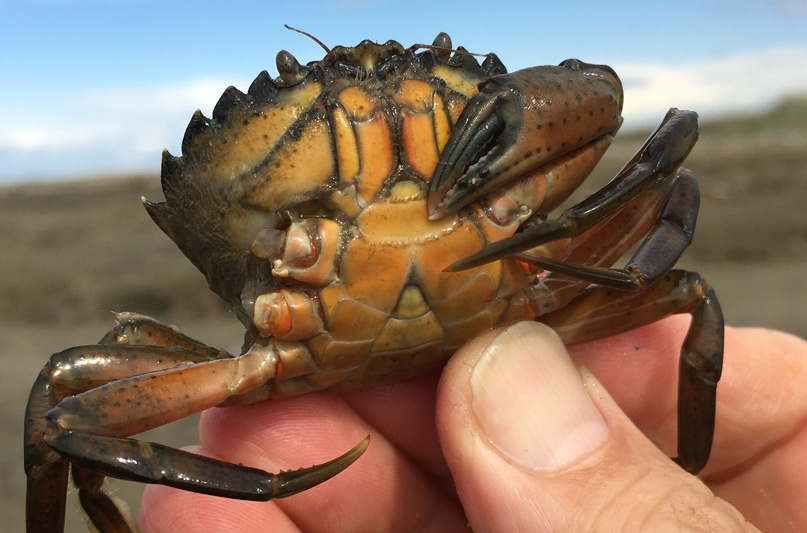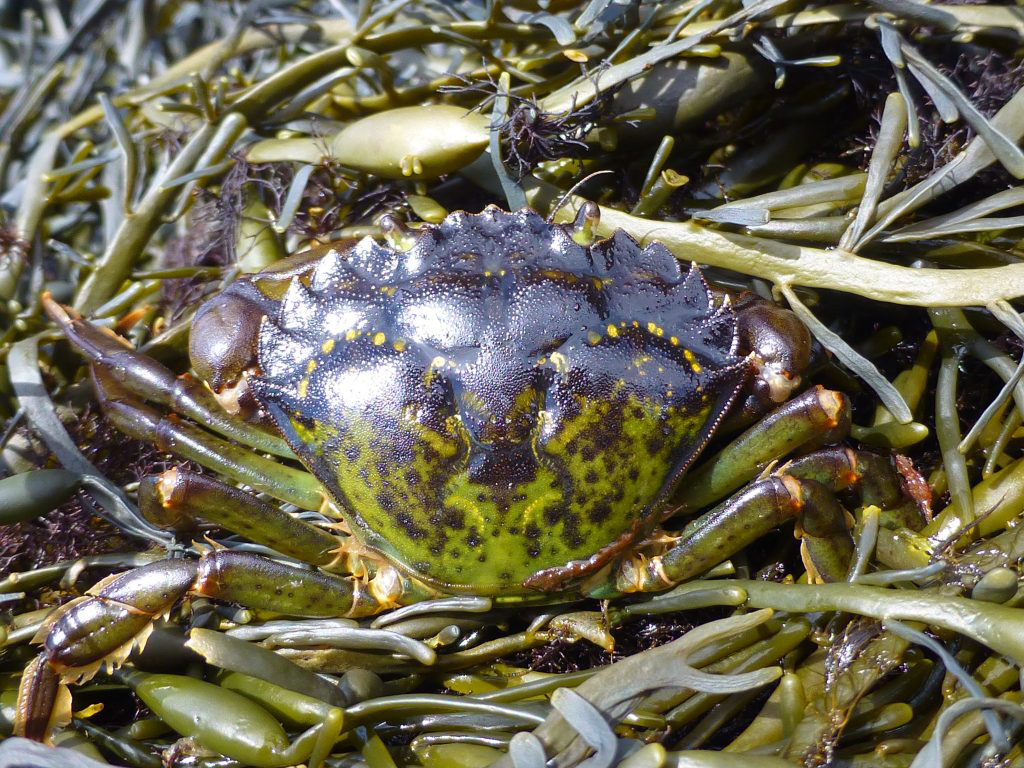
The rich waters of the Pacific Northwest are home to abundant marine life, but the whole ecosystem can be thrown into chaos by one invasive species. One species with the potential to do just that, the European green crab, has been detected in large numbers in Drayton Harbor and may have established a breeding population. Traps captured a total of 17 green crabs over a two-day time period.
The green crabs are omnivores that prefer to hunt mainly shellfish like clams and mussels, but will also eat eel grasses that Dungeness crabs and salmon rely on. The green crabs could also out compete several native species of crab.
The larvae of the green crab ride ocean currents or can attach themselves to boats or shipments of shellfish. They first arrived on the West Coast in the 1980s in San Francisco Bay, and were later detected on the outermost coast of Washington in 1998 where they stayed contained for about 20 years. But green crabs were detected on the Canadian side of the Salish Sea in 2012, and in response, the Washington Department of Fish and Wildlife (WDFW) and Washington Sea Grant (WSG) formed Crab Team in 2015. Made up of hundreds of volunteers, nonprofit organizations, local, state, and federal governments, and ten Salish Sea tribes, the team works to monitor the progress of the crabs in the area.

For the first year, none were found, until one crab was trapped on San Juan Island. Since then, green crabs have been captured at 12 locations in the Salish Sea and Puget Sound. Most of these were individual crabs and not obviously members of a larger group. It took three years to find a total of 222 green crabs at Dungeness Spit, and the combined total of green crabs spread over the other ten areas in the same three-year period was just 27. Volunteers had to look very hard in order to find any of the green crabs in Washington’s inner coast. That’s why capturing 17 of the crabs over two days in late September of this year is so concerning.
The WDFW, Washington Sea Grant, Canadian Department of Fisheries and Oceans, and the Puget Sound Partnership have created an action plan to combat the green crab, but boaters and recreational crab fisherman can help. Any green crabs spotted at a beach or captured in a crab pot should be reported to the WDFW or Washington Sea Grant. Please take a picture with an object like a coin in order to show its size. The green crabs should be left where they are, which can seem counterintuitive, but this is a law designed to protect native crabs in case of mistaken identity.
Dead crabs or empty shells can be collected to help with later identification. There is a guide to identifying green crabs on the WSG website at wsg.washington.edu.